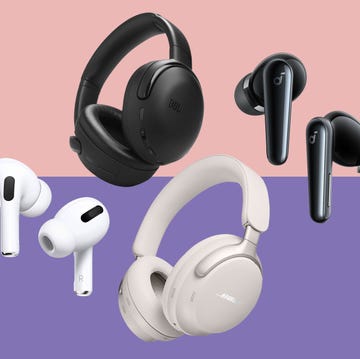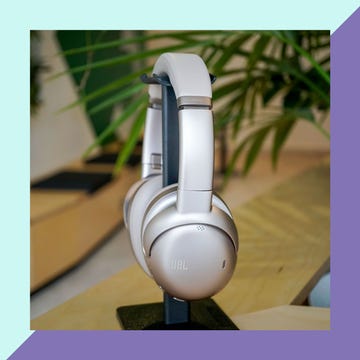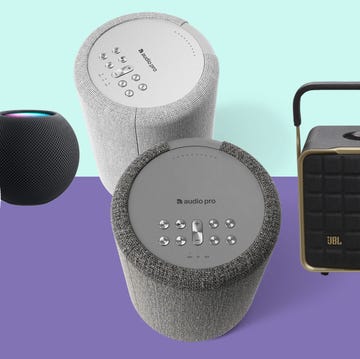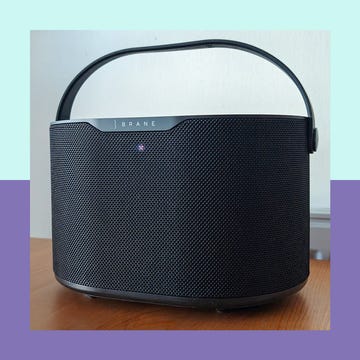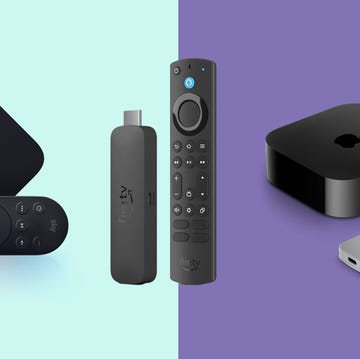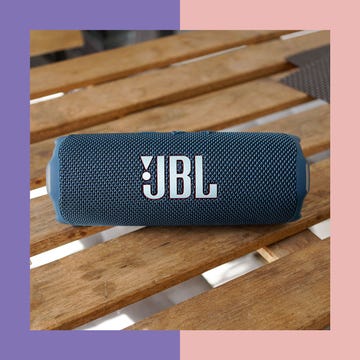We earn a commission for products purchased through some links in this article.
The best record players that offer great sound for vinyl lovers
Revive your record collection with these top-rated players

Whether it’s driven by nostalgia or TikTok – physical record sales are at their highest level in decades, which means more and more people are on the lookout for the best record player that they can listen to them on.
If you’re reading this, then you’re probably one of them. Maybe you’re searching for your first turntable and not sure where to start, or perhaps you’ve got a loft full of vinyl but nothing to play it on anymore. Whatever your situation, we can help.
Best record players
We’ve tested each turntable in this list, so you can be sure that you’re choosing wisely – but if you need a little more guidance on what you should be looking for in your new record player, we have lots of great buying advice for you too. Keep reading for all of that, plus our pick of the best record players under £500.
How the GH Tech Team tests record players

We keep all the record players we test under £500, as we feel that is a solid budget to balance out performance, build quality, and features for most people. Enthusiasts can spend thousands of pounds on their pick of player, but we believe the majority of our readers will find their needs met within this £500 budget.
Once we have a record player in for testing, we take note of the quality of the materials used, how easy it is to set up and whether it includes any extra features that are worth your while. We compare this to other record players we’ve tested and consider the cost to ensure it’s of a standard that we would consider appropriate for its level.
Then – like when testing DAB radios, smart speakers, and multi-room speaker systems – we use it just as you would at home. We sit back and listen to records. We listen to a range of genres to assess the performance, but keep any other variables to a minimum, listening on the same amplifier and speakers to make it easy to hear character differences.
Where a turntable includes its own phono stage (the majority here do), we will largely listen to that when evaluating performance, but will always take a listen through an external phono stage too – this will almost always improve performance, but will cost you more.
Pros
Solid build quality
Engaging, entertaining sound
Simple setup
Cons
Upgrade options are limited
The Rega P1 is this brand’s most entry-level deck, with the “Plus” in its name here indicating the addition of a built-in phono stage for plug-and-play convenience.
While a lot of onboard phono pre-amps can be of questionable quality, the one included here is quite different. It’s a customised version of Rega’s excellent value Fono Mini, arguably one of the best phono pre-amps you can buy under £100. That makes it an excellent choice for anyone looking to keep things simple and keep extra kit down to a minimum. Just be aware that you can’t bypass that pre-amp, you’ll want to choose the regular P1 if you don’t need it.
The P1 Plus is beautifully and solidly built for its price, with the options of three different colours for the plinth to match your décor (white, black and walnut). It’s simple to set up too – you will need to attach a tracking weight, but push it all the way onto the tonearm, and it’s balanced to the right specifications. No further tweaks or setup are required.
As for how it sounds, it’s a confident performer, offering a full-bodied, yet balanced sound that works with everything we throw at it – from Elvis to ELO. There’s plenty of detail, great clarity from top to bottom, and stacks of energy that give the P1 Plus a very engaging and likeable character. You’ll struggle to find a better all-rounder at this price.
Key specifications
| Dimensions | 44.7 x 36 x 11.7cm |
|---|---|
| Weight | 4.35kg |
| Platter material | Phenolic resin |
| Phono pre-amp | Yes |
| Outputs | RCA out |
| Wireless connectivity | None |
| RPM | 33 / 45 |
Pros
Easy to set up
Automatic operation
Good value
Cons
Plasticky build
Built-in cables
No upgrade path
If you’re on a budget, the Denon DP-29F is a solid starter turntable that champions simplicity and ease of use, making it great for turntable newcomers too.
There’s very little to set up here. You will need to take a minute to mount the metal platter onto the deck and loop the attached belt over the motor but that’s it – the cartridge is pre-installed, the tonearm is balanced and there’s no bias to set. Plus, since it’s automatic, you don’t have to move the tonearm onto the record yourself.
Press the start button on the front and the tonearm will automatically go to the beginning of the record. Press stop and the tonearm will return to its rest – it all works smoothly and without issue. Of course, you can still manually move the tonearm to specific spots on a record if you prefer – just be aware there is no tonearm lever to help support you as you do.
That’s not the only design quirk here. It’s fair to say the plasticky build of the Denon DP-29F is a slight disappointment. It feels very lightweight and flimsy compared with other turntables we’ve tested. We don’t love the built-in cables either, since you can’t easily replace them if they get damaged. Still, its retro styling looks nice enough, it has easy-to-access controls for speed and record size and it’s a compact design for smaller spaces too.
The built-in phono stage can be bypassed through a switch under the platter, but even with it turned on, the sound here is enjoyable for its price. It’s not as detailed as you’ll find decks that cost more, and it sounds a little smaller too, but it’s a solid performance with enough drive and enthusiasm to get your toes tapping.
Key specifications
| Dimensions | 36 x 35.7 x 9.7cm |
|---|---|
| Weight | 2.8kg |
| Platter material | Aluminium |
| Phono pre-amp | Yes |
| Outputs | RCA out |
| Wireless connectivity | None |
| RPM | 33 / 45 |
Pros
Lively, detailed sound
Easy set up
Option to downgrade features and save money
Cons
A little lightweight
Bluetooth is hit and miss
Pro-Ject has an excellent reputation for its turntables, and the affordable E1 BT goes a long way to showing us why.
The E1 comes in three flavours – the basic E1 model, the E1 Phono, which adds in a phono stage and the E1 BT, which is on test here and includes the phono stage and Bluetooth playback too.
As is befitting an entry-level turntable, the E1 BT keeps things simple, with things like the tracking weight and bias pre-set at the factory, and the popular (and excellent) Ortefon OM5E cartridge pre-installed.
It’s an overall modern, minimalist design, available in a choice of black, white or walnut finishes. It’s beautifully made, if a little on the light side, so just take care it doesn’t slip around when you’re using it – its felted feet aren’t the grippiest.
Listening through the built-in phono stage, it does a grand job at this price. It’s lively, dynamic and expressive, with a keen eye for detail and a strong grip on timing. It’s not quite as full-bodied as something like the Rega P1 Plus, but it’s certainly not lacking in punch and is a truly engaging sound that’ll hold your attention for track after track.
If you want to use Bluetooth, the pairing process is a little clunky — though the E1 is not alone in this. Like many turntables, it simply pairs with the first Bluetooth device it finds, and we had to switch it on and off several times before it paired with what we wanted it to, which felt more like luck than judgement. Unless you need Bluetooth functionality, consider saving £60 and buying the E1 Phono instead.
Key specifications
| Dimensions | 42 x 33 x 11.2cm |
|---|---|
| Weight | 3.5kg |
| Platter material | ABS polymer |
| Phono pre-amp | Yes |
| Outputs | RCA out |
| Wireless connectivity | Bluetooth 5.0 |
| RPM | 33 / 45 |
Pros
Smooth, laid-back sound
Great build quality
Upgradable
Cons
Bluetooth is unreliable
Audio-Technica produces a wide range of turntables, from entry-level to more sophisticated. The AT-LPW50BT is somewhere in the middle, offering good build quality, upgraded components and the ability to upgrade them further later on, should you wish.
It looks the part and everything about the build quality is impeccable, with a rosewood veneer MDF plinth, carbon fibre tonearm, hydraulically damped lift control and die-cast aluminium platter.
As one of the pricier turntables we’ve tested, there is an expectation that you may want a bit more of a manual setup. This means you’ll be fitting the cartridge headshell, the tracking force and the anti-skate dial, but the instructions are all very straightforward to get you there.
There’s a built-in phono stage, so we used that for most of our testing, and the Audio Technica produces a smooth, easy-going sound that works well with all sorts of music. We play everything from Michael Jackson to Adele, and find there’s texture and detail aplenty here, with an open soundstage, balanced sonic character and enough rhythmic drive to grab your attention.
It doesn't offer quite the level of insight or precision as you’ll hear with the Rega P1 Plus, nor is it as dynamic. The AT-LPW50BT has a more mellow, laid-back character making it listenable and enjoyable.
There’s Bluetooth on board here, but it’s pretty temperamental, so some perseverance is needed. Once connected it sounds good though — there’s a touch more energy compared with the built-in phono stage, though the treble is a little pitchy with some recordings.
Key specifications
| Dimensions | 42 x 34 x 12.6cm |
|---|---|
| Weight | 5.5kg |
| Platter material | Aluminium |
| Phono pre-amp | Yes |
| Outputs | RCA out |
| Wireless connectivity | Bluetooth 5.2 |
| RPM | 33 / 45 |
Pros
Recycled materials in build and packaging
Warm, rich sound
Good features
Cons
Bass is a little boomy
No dust cover
House of Marley prides itself on its use of recycled materials, and unboxing the Stir It Up Lux is really refreshing. There’s not a single piece of plastic in sight, even down to the cardboard ties securing the tonearm in place in transit.
That continues to the turntable itself, which uses a bamboo plinth and glass platter, and there’s a double-sided cork slipmat which has a cool trick of animating under strobe lighting. The only downside to the brand’s no-plastic commitment is there’s no dust cover here, so you’ll need to keep on top of cleaning to ensure your turntable stays sounding its best.
When it comes to setup, you’ll have to do the legwork. There’s a manual balance weight and an anti-skate dial that needs setting, but the instructions help you get it done pretty easily.
With the House of Marley’s sizeable lineup of Bluetooth speakers, it’s hardly surprising that Bluetooth is on board here, and it is one of the few turntables we’ve tested that pairs without any hiccups. There’s also a built-in phono stage and a headphone output too, which is a nice addition.
Put a record on, and the House of Marley serves up a warm, rich performance. There’s a real lean towards the lower frequencies here, which creates a solid and authoritative sound, but can cause the mids to sound a little recessed and muddy by comparison.
You’ll lose a bit of the boominess and gain a bit of clarity via an external phono stage, but the overall character here is undeniably bottom-heavy, so just be sure that’s to your taste before you invest.
Key specifications
| Dimensions | 42 x 34.8 x 10.5cm |
|---|---|
| Weight | 4.53kg |
| Platter material | Glass |
| Phono pre-amp | Yes |
| Outputs | RCA out |
| Wireless connectivity | Bluetooth 5.2 |
| RPM | 33 / 45 |
Pros
Balanced, energetic sound
Lots of features
Great value
Cons
Bluetooth can be tricky to pair
Lenco has enthusiastically embraced the vinyl revival and focused much of its attention on affordable turntables — including a few of the “turntable-in-a-suitcase” style designs we aren’t keen on.
However, the LBT-225WA is much more reminiscent of the brand’s original hi-fi heritage. It’s one of Lenco’s more premium decks and delivers several features for a good price.
Design-wise, it looks as good as some turntables that cost much more. It has an MDF plinth in a walnut finish, carbon fibre tonearm and glass platter. It’s a fully manual setup here too, with the slightly fiddly anti-skate weight design that we see in Pro-Ject’s pricier turntables, like the Carbon Debut Evo. This means you could upgrade this deck in the future, swapping out the included AT-VM95E cartridge if you wish to.
There are a lot of features here too, including a built-in, swappable phono stage, Bluetooth 5.2 and a USB connection for ripping your records into digital files. Great if you’ve got some old classics you want to take with you on the go.
We ran into some familiar struggles with Bluetooth but got connected after a couple of attempts — having the Bluetooth pairing as a button at the top right does make it nice and easy to get going.
Using the built-in phono stage, the LBT-225WA is a spritely performer, with plenty of energy, a good handle on dynamics and a good amount of clarity through the midrange. Its sound is leaner than the Rega P1 Plus, but there’s still enough punch to ensure it doesn’t sound lightweight.
Key specifications
| Dimensions | 42 x 36 x 12.5cm |
|---|---|
| Weight | 6.64kg |
| Platter material | Glass |
| Phono pre-amp | Yes |
| Outputs | RCA out, USB-C |
| Wireless connectivity | Bluetooth 5.2 |
| RPM | 33 / 45 |
Pros
Refined, polished sound
Good specification
Well-made
Cons
Design could divide opinion
Could be more dynamic
JBL has a rich history in hi-fi and audio that dates back to the 1940s, but turntables are one area it hadn’t dabbled in until recently. The JBL Spinner BT is the entry-level option of its now two-strong lineup, and it offers a lot to like at a competitive price.
Its bold design might divide opinion, but the black and gold finish we have in for testing is rather more understated than the retro black and orange option you can choose instead. We quite like both, and appreciate the attention to detail with the coloured accents on things like the logo, the platter’s edge and the anti-skate dial.
With a black-painted MDF plinth and aluminium platter, we’ve no complaints about its build quality, with two electronic buttons to select your record speed and well-damped feet to keep any external vibrations at bay.
A manual setup is required but it’s straightforward enough. You get a built-in phono stage, which you can bypass if you prefer, plus there’s Bluetooth, which feels like a no-brainer considering the extensive JBL Bluetooth speaker lineup on offer. We’re pleased to see it supports aptX HD Bluetooth too, which offers a higher quality playback than any other Bluetooth deck on test. However, the position of the pairing button on the rear is slightly annoying.
The Spinner BT jumps into life with auto-play when you lift the tonearm and keeps that good energy going throughout. It’s a refined performance for its price, with a fair amount of detail, a decently wide soundstage and a smooth, balanced presentation that is forgiving without tipping the scale into sounding soft. It’s not the last word in finer dynamics and we’d take a touch more sparkle in the highs, but it’s expressive enough to maintain a song’s musical intent, creating an engaging and enjoyable listening experience no matter the genre.
Key specifications
| Dimensions | 43.5 x 36.8 x 15.5cm |
|---|---|
| Weight | 5.3kg |
| Platter material | Die-cast aluminium |
| Phono pre-amp | Yes |
| Outputs | RCA out |
| Wireless connectivity | Bluetooth 5.2, aptX HD |
| RPM | 33 / 45 |
Pros
Outstanding sound
Quality components
Upgradable
Cons
Slightly fiddly setup
Requires extra kit to get started
Pro-Ject has a strong reputation in the turntable market, and that’s why it gets two entries in this list. The Debut Carbon Evo is the latest upgrade to its most popular turntable, and our priciest on test.
Whether you’re a beginner wanting to invest a bit more in your hobby or upgrading from a cheaper deck, it’s fair to say the performance you’ll get here will outshine pretty much everything else we’ve tested. It still sits just inside the entry-level market, but has an upgrade path to take you firmly into mid-range territory, should you wish.
That’s because you’re coming from a strong starting point, with a refined design made from good-quality materials, improved damping to reduce resonance and an expanded choice of 33, 45 or 78 RPM. There’s an Ortefon 2M cartridge pre-installed, a one-piece carbon fibre tonearm and a fantastic choice of colours and finishes. Even the cables included in the box are of significantly better quality than you’ll find elsewhere.
The setup here takes the longest of any turntable we tested. It’s not hard, but just a bit fiddly, since you’ll be using some small weights and fine fishing wire to set the bias, as well as fitting the platter and balancing the tonearm manually.
There’s no phono pre-amp included here either, so you will need to invest in one or ensure your stereo amplifier has one built in. As for how it sounds, it’s a rich, yet insightful performance that digs up stacks of fine detail but never sounds clinical. The mids get a particular focus here, but there’s no lack of weight in the low end, giving it plenty of authority and solidity.
The dynamics are expertly voiced, the treble is allowed greater extension than you’ll hear on cheaper decks and there’s a level of precision that shows its class. It’s an incredible performance at this price.
Key specifications
| Dimensions | 41.5 x 32 x 11.8cm |
|---|---|
| Weight | 5.6kg |
| Platter material | Damped steel |
| Phono pre-amp | No |
| Outputs | RCA out |
| Wireless connectivity | None |
| RPM | 33 / 45 / 78 |

Verdict: Best record players
For the best all-around record player under £500, we recommend picking the Rega P1 Plus, or going for the upgrade option of the Pro-Ject Debut Carbon Evo, which is almost £500. The Rega P1 Plus is a great pick for its solid sound, build quality and straightforward setup.
If you're on a budget, go for the Denon DP-29F, a good value and easy-to-set-up automatic player. We also recommend the House of Marley Stir it Up Lux for its use of recycled materials in its construction.
And, if Bluetooth support matters to you, our top pick is the JBL Spinner BT, which has the least trouble with Bluetooth connections of any model on test.
Do you need speakers for a record player?
Yes, any record player needs speakers and amplification to play back your record’s sound, but how this looks in practice can vary.
Some of the cheapest record players come with everything built in, in one box – you’ll likely have seen the suitcase-style turntables sold by many online stores. However, you won’t find any of those recommended here. While compact and convenient, they sound terrible and can damage your records thanks to their cheap components.
Your money will be far better spent on a good entry-level setup, which will sound far superior and give you a system to last you years – not to mention one that may be upgradeable over time, should you wish.
So what do you need for your record player setup? As well as your turntable, you need a phono pre-amp (also known as a phono stage), an amplifier and speakers. And while you can have all of these as separate components for the very best-sounding setup, they can also be combined for something much simpler too.
For example, if your turntable comes with a built-in phono stage – and most of our recommendations do, to allow you this flexibility – you can simply attach it to a pair of active speakers (which have amplification built-in), or even a Bluetooth speaker, if your turntable offers it. While you might enjoy building your own system, if you’re feeling unsure, looking to the same brand as your choice of turntable can be a great starting point, as components are often tuned together for a strong family sound.
Some manufacturers have even started offering turntable bundles, to save you time. Premium options include the Rega System One or the Pro-Ject Colourful Audio System, but more affordable options exist from the likes of House of Marley and Lenco too.
Hi-fi retailers will also bundle complementing equipment together, so it’s worth looking online for their recommendations as well.
Do turntables sound better than digital?
Ah, the age-old debate. The safe answer here is they sound different. But what ‘better’ means to one person, can be very different to another – so really it comes down to preference.
Those on the vinyl side will argue that the way records are made means that the continuous analogue waveform is replicated precisely into the grooves of a record, making it a more authentic copy of the original recording – and that that makes it “better”.
However, objective measurements show good quality digital files are actually more accurate and consistent when it comes to things like distortion, frequency response, dynamic range and channel separation.
You’ll usually hear vinyl sound described as ‘warmer’ than digital. That’s a somewhat subjective observation, but it is likely because records do a better job of reproducing the mid and lower frequencies than higher ones, which creates an overall richer sound.
As for that nostalgic vinyl pop and crackle? That’s actually surface noise created by dust in the grooves, and is something you ideally want to avoid. But for some people, that’s all part of the vinyl appeal – you get a much cleaner reproduction with digital.
What to look for when buying a turntable
We’ve already discussed what you don’t want from your turntable shopping — the main point is to avoid the all-in-one suitcase designs — but what should you be looking for in your next record player?
RPM
This stands for rotations per minute and having this set right will be important to your record playback. 33 (and a third, if we’re being accurate) is usually the correct setting for the ‘standard’ size record, while 45 is the right setting for smaller vinyl. Those are the most common settings on decks at this price, but you might find 78 on some a little pricier — those records are rarer though, and generally something for enthusiasts.
Belt-drive or direct-drive
You may also have seen the terms belt-drive and direct-drive in your search and wondered what they meant. The likelihood is you’ll buy belt-driven — direct-drive turntables are usually the more “DJ-style” decks, where the motor sits under the platter. Belt-drive is usually favoured for giving the very best sound for an at-home listening experience.
That’s because it does a better job of isolating any vibrations from the motor, which can affect the sound. Turntables are really vulnerable to outside noise interference from various sources, so a lot of what makes the very best record player is how that is prevented.
Design and materials
These can play a huge part when it comes to sound quality. For example, with the plinth, you’ll want that to be as solid as possible, to withstand external vibrations from any speakers. At the sub-£500 level, you’ll probably be looking at an MDF veneer as the top option, though you will find a fair bit of plastic at this price too. Don’t dismiss a deck outright because of this, some have been strengthened and well-damped to help, so just do a bit of research.
The platter material, which the record spins on, also has an impact on sound, though different companies have different takes on what is best. Common materials are aluminium, glass and plastic — generally, you want something heavy that guards against resonance, but budget will come into this. Turntable mats can help too.
As for the tonearm, you want it to be as stiff and lightweight as possible — carbon fibre is typically the gold standard here, but aluminium is also good.
Next, consider how much you want to be involved in the setup. Many entry-level turntables can do a lot of the heavy lifting for you, with preset counterweights (which ensure the stylus is putting the right amount of pressure onto the vinyl) and preset bias, or anti-skate (which exerts an outward force on the tonearm to keep the stylus where it should be in the record groove), making a turntable pretty “plug and play”.
This will usually mean there’s no upgrade path, but that might not worry you if you’re a casual listener. You can even opt for a fully automatic turntable that will lift the tonearm into place for you, and return it back to its rest when you’re done.
Upgrading your record player setup
But what sort of upgrades could you do? At this level, the most obvious one is upgrading from the included cartridge, which has a huge impact on the sonic character. However, that will usually require different weight and bias settings, making preset decks out of bounds.
There are a few other things to consider. Do you need a built-in phono stage (sometimes called a phono pre-amp)? Most of the turntables we have recommended have one built-in, which helps to keep starter setups simple, but if you have an amp with one built-in, you could save money by looking for one without it.
And what about other features? If you don’t want to buy an amplifier and stereo speakers, having Bluetooth on board can simplify your setup hugely. We have to vouch for the beauty of proper analogue sound through an amplifier and stereo speakers, but having Bluetooth available gives you flexibility, even if the initial setup process is a little frustrating on most turntables.
7 April 2025: This article was updated to reflect the most up to date prices and deals, as well as check stock levels. We also updated the headlines.
Verity Burns is a freelance technology journalist with more than 15 years experience in the industry. She started her career in 2008 with staff writer roles at Pocket-Lint and Stuff, covering the rise of the early smartphones and the launch of the first iPad, before moving to become editor of MSN Tech and Gadgets in 2010. She spent almost three years there, covering the breadth of consumer tech as well as launching MSN Games, before moving to What Hi-Fi? as Multimedia Editor in 2012. There, she was a senior member of the editorial team, writing news, features and reviews across hi-fi and AV, as well as being responsible for presenting videos on their YouTube channel.
In 2017, Verity left What Hi-Fi? to go freelance, writing in-depth features, op-eds, buying guides, news and reviews for the likes of the Metro, Wired UK, The Observer, Stuff, TechRadar, The Sun, Trusted Reviews and BBC Science Focus, among others. Verity rejoined Pocket-Lint for an 18-month spell as Reviews Editor in 2022, running the site's incredibly busy reviews programme, before returning to freelance again in 2024. She generally specialises in reviewing audio and AV products, but has experience in testing most things with a plug.
When she isn't typing, you'll occasionally catch her on BBC Radio providing analysis on the latest tech news stories, and even on your telly when she's feeling brave enough. Outside of work, she has two young children and two old dogs that keep her very busy indeed.
You can follow Verity on Twitter (or X) at @verityburns or on Mastodon @verity@mstdn.social. She's @verityperry over on Instagram and Threads, just to keep you on your toes.
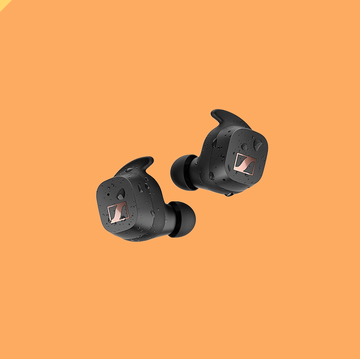
13 best headphones for running and workouts
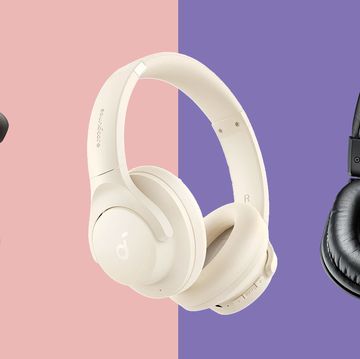
The best headphones under £50
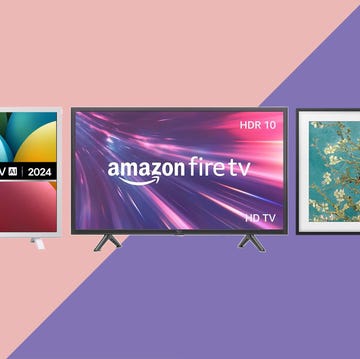
The best 32-inch TVs for smaller spaces
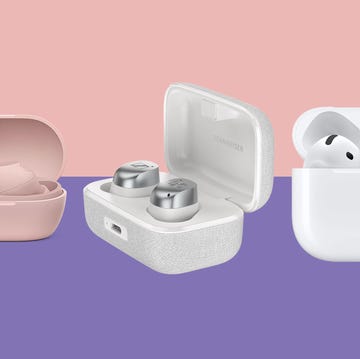
Best wireless earbuds to shop in 2025








